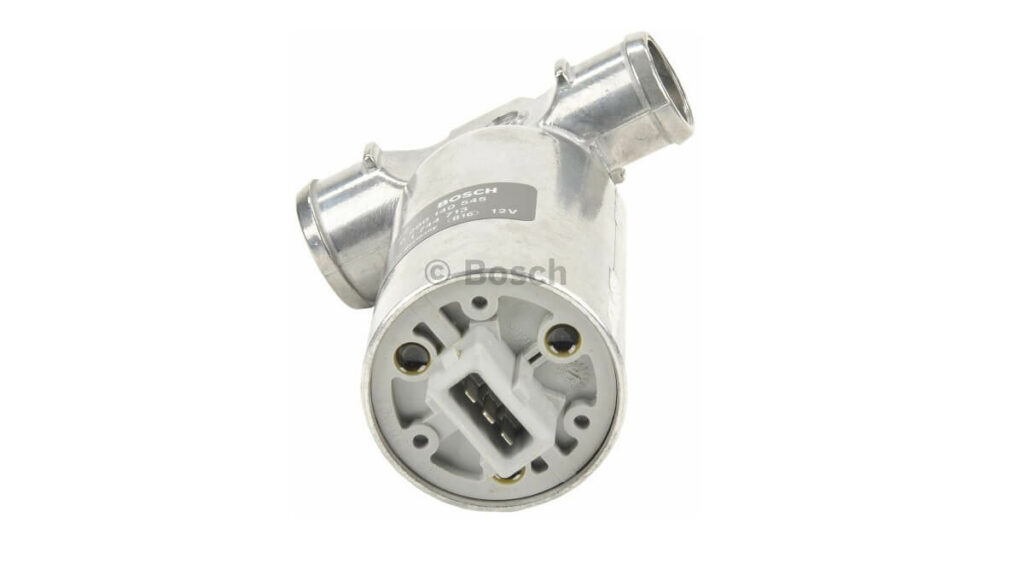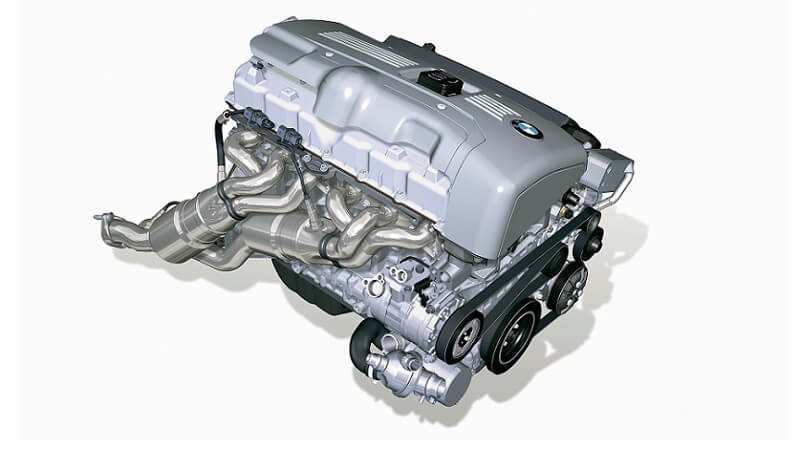Imagine that every time you started your car, you had to feed the throttle just to keep the engine running. Or every time you came to a halt and took your foot off the gas, the engine would stall. This would make driving quite cumbersome and even unpleasant.
An idle air control valve addresses this very problem. It ensures that an engine idles at a steady RPM without stalling, irrespective of ambient conditions.
While they are designed to last as long as the vehicle, various factors may cause them to fail prematurely. This will result in an engine that fails to idle and stalls when you are not accelerating. Depending on why your idle air control (IAC) valve is acting up, you might have to replace it.
In this guide, we’ll give you a quick rundown on the idle air control valve, how it works, and how you can clean a malfunctioning one.

What Is the Idle Air Control Valve, and What Does It Do?
The idle air control valve enables the engine to idle smoothly after startup or when the vehicle comes to a stop. It works by allowing air to bypass a closed throttle plate when the engine is at idle and, for this reason, is also referred to as the air bypass valve.
In a fuel-injected engine, a throttle body regulates how much air enters the engine. When you crank the engine, the engine control unit (ECU) checks multiple parameters, like ambient temperature, air volume coming into the engine via the MAF sensor, and engine coolant temperature, to decide how much air and fuel should be injected into the cylinders.
The throttle body butterfly valve is closed when you’re not pressing down on the accelerator pedal, allowing no air to enter the engine. The idle air control valve bypasses air around the closed throttle valve and sends it to the engine, allowing it to receive the air it needs to combust fuel while idle.
The idle air control valve only works when the throttle body valve is closed. So every time your foot is off the pedal, the IAC valve immediately comes into play. The IAC valve may be a part of or separate from the throttle body, depending on its design. In most cases, it’s attached to the throttle body.
You should also know that idle air control valves, while still incredibly common, are slowly becoming a disposable technology. This is because cars with an electronically controlled throttle body or drive-by-wire system use a motor-driven throttle assembly rather than a cable-actuated one. In this case, the motor opens the throttle body butterfly valve to ensure the engine receives air at idle.
What Causes Idle Air Control Valve Failure?
An idle air control valve is designed to last the vehicle’s lifetime, but the lack of maintenance can cause them to fail prematurely. As you may expect, the most common reason one can fail is dirt and carbon build-up. The valve and chamber walls may be coated with aerosolized oil droplets from the crankcase ventilation system. The dust and dirt particles that make their way past the air filter stick to this oil, which can clog the channel. If this is why your IAC is malfunctioning, cleaning it will likely rectify the issue.
An idle air control valve may also stop working because its servo actuators have failed. The IAC consists of an actuator that varies the airflow as required. The failure of this actuator is not as common as a clogged valve, but this type of failure will require a new unit to be installed.
What Are the Symptoms of Idle Air Control Valve Failure?
An idle air control valve, as its name suggests, ensures that the engine is running smoothly while idling. If it fails, the symptoms you’ll experience are pretty obvious and include unstable idling speed, engine stalling at low RPMs, and sputtering while decelerating.

Rough Idle
As expected, the most common symptom you’re likely to experience is to do with the idling speed. A faulty idle air control valve may result in an idling RPM either too high or too low. In some cases, it may also result in a constantly fluctuating idling speed, where the RPM rises and drops repeatedly. This happens because the engine isn’t receiving the steady supply of air it requires to idle smoothly.
Engine Stalling and Failure to Start
A problematic IAC valve can result in insufficient air reaching the combustion chamber when idling or decelerating. This can cause the engine to shut off immediately. If you notice this happening when you’re out, the best course of action is to feather the throttle constantly and keep the revs up, so the engine doesn’t stall on you.
In rare cases, a faulty idle control valve may also hinder your ability to start the engine.
Engine Backfire
Engine backfire is a condition caused by the air-fuel mixture being ignited outside the combustion chamber. If you notice flames shooting out of your exhaust, your engine is backfiring. This happens when unburnt fuel vapors ignite as they reach the tailpipe.
A faulty IAC valve could cause this condition, but on most BMWs you’re more likely looking at a large vacuum leak, usually somewhere near the top of the engine.
Stalling or Hesitation Under Load
Sometimes, you may also find that the engine dies when you turn on the air-con while idling. This is a tell-tale sign of a problematic idle air control valve as turning the AC on increases the load on your engine and causes it to stall.
Check Engine Light
Lastly, a failed idle air control valve will likely light up the check engine light (CEL) on your dashboard. When the ECU finds that the engine rpm is abnormal, it’ll illuminate the CEL to alert you about an issue.
The check engine light will be illuminated for many reasons — anything that’s wrong with your car’s main systems — so the best way to find out if it’s IAC valve-related is to connect the vehicle to an OBD-II diagnostic tool and check for error codes.
How Do I Fix My Idle Air Control Valve?

In most cases, the idle air control valve starts acting up because it gets clogged with dust and grime, preventing airflow to the engine. If this is the case, you will be able to fix it by cleaning it. Luckily, cleaning the IAC valve is a relatively simple process, and you should be able to do it yourself. We’ll take an E46 BMW as an example. Here’s a video tutorial, but you can also follow our steps for most BMWs of the N52 generation.
Step 1 – Locate the Idle Air Control Valve
The first step in cleaning the idle air control valve is to locate it. In most cars, including your BMW, the easiest way is to work your way up from the large air filter box. The large duct from the air filter box will eventually run to the throttle body to which the IAC valve is attached.
Step 2 – Remove Air Intake Assembly
Disconnect the clamps that hold the air filter box in place. Next, remove the MAF sensor housing, the intake booth, and the F tube. Ensure you disconnect the battery before unplugging the wiring to the MAF sensor. Then remove any vacuum lines and hoses connected to the air duct. Once you’ve done that, you’ll also need to remove the DISA box as it’s in the way.
Step 3 – Disconnect the Throttle Body
At this point, you should have the throttle body in view, along with the IAC valve. You’ll see a wiring harness and the connector leading to the IAC valve down and to the left from the intake plenum orifice.
With the IAC valve disconnected, undo the 10 mm bolts that hold the throttle body in place, and you should be able to remove the IAC valve without removing the whole throttle body.
Step 4 – Clean the Idle Air Control Valve
Inspect the valve and try to give it a good cleaning. On most cars, especially older bimmers such as the E46, you’ll likely see a decent amount of buildup. Use a throttle body cleaner and a fine brush to remove any carbon from the idle air control valve. If cleaning doesn’t work, you might need to replace the IAC. We highly recommend that you use an OEM part such as the Bosch 0280140545 IAC. That way you’ll know that you won’t have to worry about this issue in the future.
Buy a Genuine Idle Air Control Valve
Idle air control valves are designed to last the lifetime of the vehicle. However, a wide range of factors could cut their life short. There are several OEM and aftermarket options for an idle air control valve. Still, we strongly recommend going with a reputable brand and a proven product since this is a component that plays a vital role in your engine.
Here at Bimmers.com, we offer an extensive inventory of genuine parts, including IAC valves. To find the right one for your car, simply head over to our shop, select your car model from the list, and search for the part you need.





